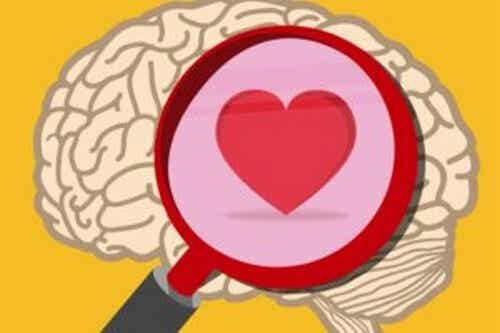The challenges that doctors, nurses, physiotherapists and all those who work in the health sector face every day generate in them a series of emotions that affect their health. It is difficult to remain indifferent in the face of the great work, emotional and professional load involved in working with people with health problems.

Last update: May 29, 2020
Emotional regulation in health settings helps health specialists to recognize the usefulness and the transitory nature of emotions. It also helps them manage their influence and not get overwhelmed by them.
Emotional regulation consists of a series of skills aimed at recognizing, managing and controlling our emotions. From a psychological point of view, it is conceived as a basic process within emotional intelligence. This intelligence is crucial for the development of communication skills, essential for working with patients.
To practice emotional regulation in healthcare settings, it is first necessary to know precisely what this mechanism refers to and what it consists of. Learning about emotional regulation means "Acquire the ability to open up to pleasant as well as unpleasant feelings" (Fernández, 2010).
The model for emotional regulation based on the emotional process of Hervás (2011) identifies a series of steps to go through before reaching complete control:
- Emotional openness: it allows us to identify, experience and express emotions.
- Emotional attention: ability to recognize emotions and to be aware of them.
- Emotional labels: ability to identify emotions and give them a name.
- Emotional acceptance: ability not to reject the emotions felt.
- Emotional analysis: reflect and understand the meaning and implications of emotions.
- Emotional regulation.
The thought-emotion relationship
There is one bidirectional relationship between emotions and thoughts. Both feed on each other, and the collapse of one puts the other at risk. A constant negative thought, from which we cannot detach ourselves, affects how we feel. At the same time, a negative emotion that does not fit with reality affects our thinking.
A common example in healthcare workers is that they believe they cannot fully help patients due to lack of time. This dissatisfaction generates emotions such as frustration, stress or helplessness. In turn, these emotions feed the thought, causing a progressive worsening of the situation.
One solution to these problems is to change the situation through action. However, in some cases, things cannot be changed o the chances of doing so are low, especially in the health sector (when working with terminal illnesses, when symptoms persist or when resources or time are limited).
In this case it is essential to have the right tools to manage your emotions and offer quality care to all patients.
Stress in health specialists and emotional regulation in health settings
Several studies establish a directly proportional relationship between emotional intelligence and professional stress. Data indicates that increased emotional intelligence training reduces stress and increases burnout prevention (Bajo Gallego and González Hervías, 2014).
Burnout, or "burnt" worker syndrome, generates dissatisfaction at work, the degradation of the working environment, the reduction of the quality of work, absenteeism, abandonment of the profession and the adoption of passive-aggressive positions towards patients.
-Leal-Costa, Díaz Agea, Tirado-González, Rodríguez Martín and Van Der Hofstadt, 2015-
The benefits of mindfulness for patients
Mindfulness translates as full attention and consists in focusing on the present, on the here and now, following the following guidelines:
- Without judging
- Without expectations
- Open to everything around us
- From curiosity or with a beginner mind
- By adopting an attitude of self-compassion
It has been proven that the practice of mindfulness increases emotional regulation. Furthermore, in patients, this practice can:
- Increase general well-being e reduce dysfunctional emotional states and physical symptoms of chronic diseases.
- Act like protective factor in the face of worsening of cognitive function global in patients with Alzheimer's.
- Be positive for patients with stress, anxiety and depression symptoms.
- Countering the negative effects of chronic stress in cancer patients.
- Alleviate physical pain, improve overall health, social relationships, and mental health in fibromyalgia patients.
The purpose of mindfulness is not to leave the mind blank, but to accept the thoughts and feelings we experience, freeing ourselves from them. Realizing, therefore, that both phenomena are transitory and do not define who we are.
The person who practices mindfulness regularly can learn to self-regulate his emotions with mastery.


























